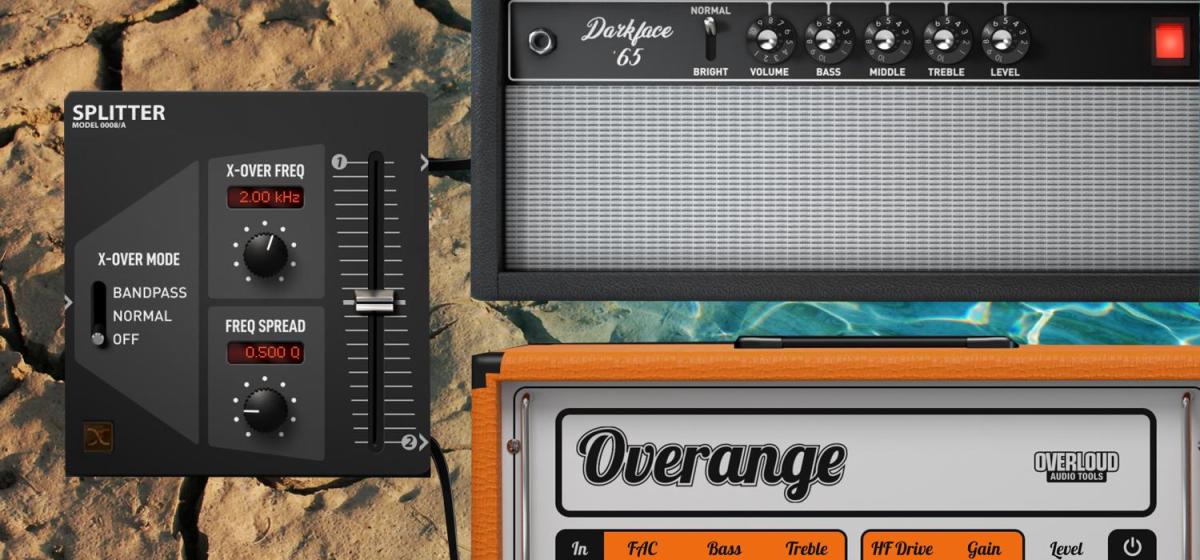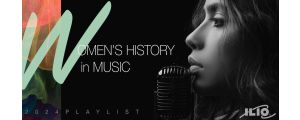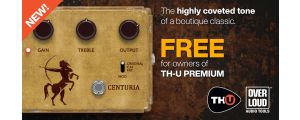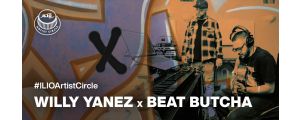Upon initially hearing the term wet/dry rig, you may be asking yourself, “What exactly IS a wet/dry rig?” Admittedly when first presented with the idea of being able to create this type of rig inside the Overloud TH-U plugin, my initial reaction was, “What is that, and why would I want to do that?” Maybe you are familiar with the process, but for those of you who are not as well versed in this topic, it can seem technical and overwhelming. Our goal is to make this process easy to understand, and answer not only the question of “how” but also the more nuanced question of “why”.
Why Should I Use a Wet/Dry Signal Path?
Let’s start with the concept of the wet/dry rig. The idea is to split your signal at some point in the chain (maybe you want this after your preamp stage, maybe before, that is entirely dependent on your end goal), and to have one signal path only contain the “dry” sounding effects and processes (amp, cabinet, compression, EQ) and the other path containing your “wet” effects and processes (delay, reverb, phase, flange, etc.). The intended purpose of this is to be able to process and blend your wet signal independently of what may be going on in your normal signal path. This allows you to maintain the deeper, wider, and often punchier and more dynamic qualities of your wet signal path without being processed by the same compression, amp or other limitations of your dry signal path. Often the result is a much more clear and open sound than if you were processing your wet effects through one signal path.
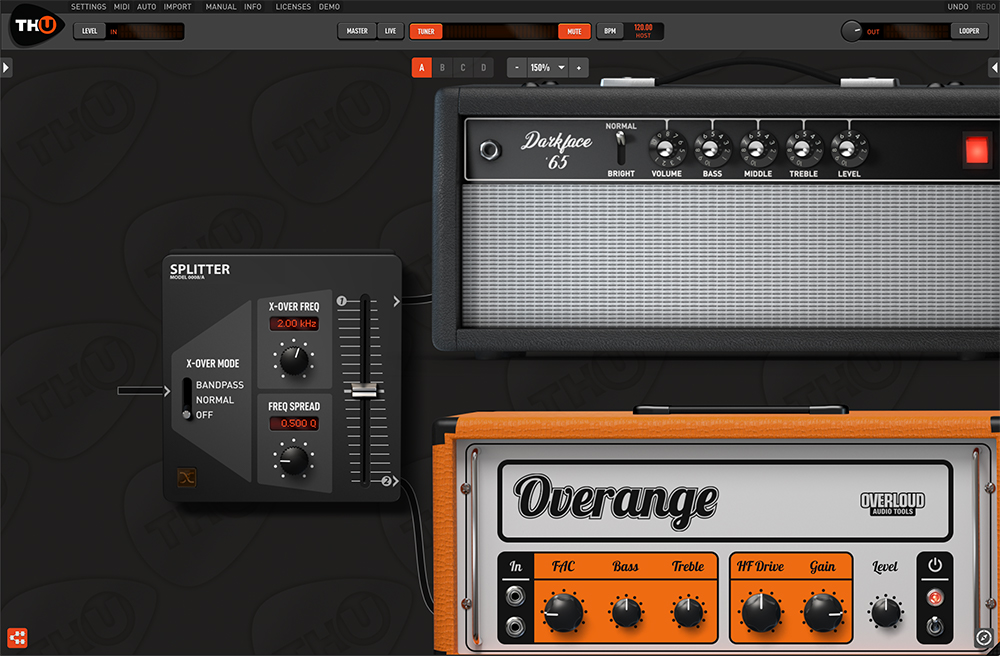
Use the Built-in Splitter in TH-U!
Now that we’ve covered what a wet/dry rig is, and why you might want to use one, let’s talk about the implementation, specifically inside the TH-U plugin. TH-U has some very powerful tools for this type of setup, starting with your signal splitter. Not only can you split the signal path, but there are two different crossover modes. Each mode effects the frequency controls found on the splitter in different ways. In normal mode, we are able to send the high frequencies to one signal path, and the low frequencies to the other signal path. The X-OVER FREQ controls in this case adjust the crossover frequency, and the SPREAD control changes the slope or “Q” which will effect how much spillover there is from each band into the other. The second option here is BANDPASS, which allows you to send a specific range of frequency to one signal path, and the remaining frequencies to another. In this instance the X-OVER FREQ will control the center point of the frequency band being sent through your first signal path, while the FREQ SPREAD control will allow you to widen or narrow that band. In either scenario, you can reverse the signal path destinations of each option by using the reverse button found at the bottom left of the splitter module. In addition to these controls, we also have a mix fader which will allow you to adjust how much of your over all signal you are sending to each signal path.
If that sounds like a lot of information to digest, that’s completely understandable. The amount of tonal variation and control over your wet/dry rig this gives you is very powerful. For instance, let’s say you only want to have the high sparkle of your wet rig layered on top of your dry sound. You can use the normal crossover mode on the splitter to send the high frequencies to your wet signal path, and add some very subtle sparkle on top of your dry sound without changing the tonal character of your dry signal path. Let’s say in another scenario you want a lo-fi delay sound, but want to keep the fullness of your dry rhythm guitar tone. No problem! Use the X-OVER mode in the cross over section, send the desired frequency range to your wet signal, and blend to taste.
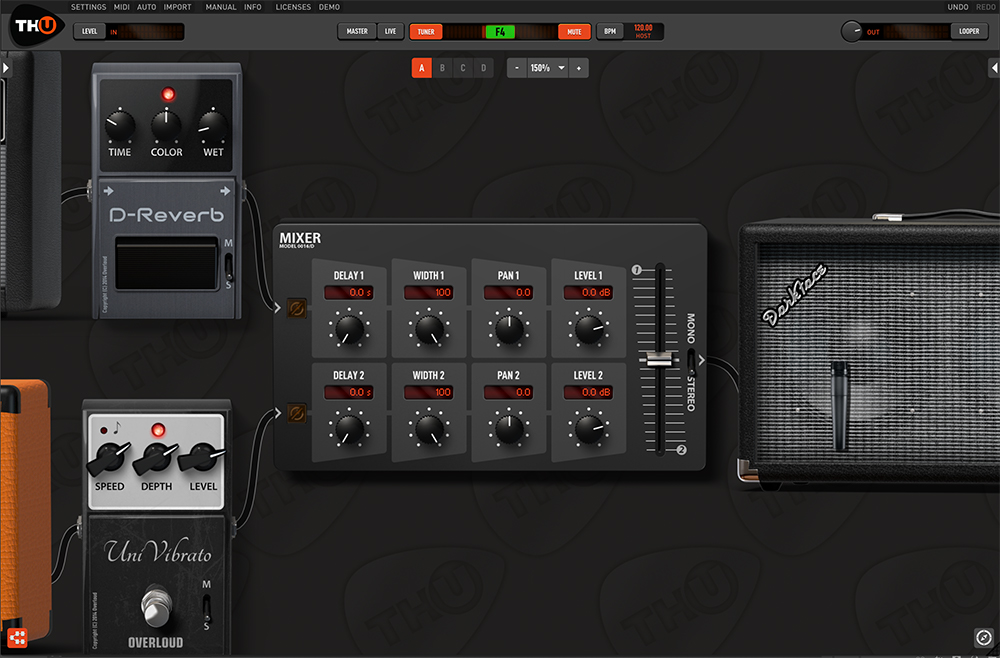
The End of the Chain - The Mixer
And if that isn’t enough to quench your thirst for tone, we also have additional controls on the companion to the splitter module, the Mixer Module. The Mixer Module is added automatically when you use the Splitter, and we can use it to control the MIX or BLEND (using the slider on the right side of the mixer) of the two signal paths, the output volume (LEVEL) of each signal path, and the stereo WIDTH, which not only can take your stereo field from 100 percent to 0 (or mono), but can reverse the stereo field as well, and more. There is also a PAN control for each signal path, and then an option that I feel is under utilized, especially by bands with a lone guitar player, the DELAY of each signal path. By adding a few milliseconds of delay to one signal path, you can pretty dramatically increase the fullness of your tone, and recreate some of the sonic experience of having a second guitar player in your band. It’s a very cool and subtle tool that can yield great results! For me personally, the ideal use of this control is using two dry rigs (in my case a two high-gain amplifiers and cabinets), panning each signal path hard left and hard right, and adding the delay to one of those signals to taste, until I have a thick and full sound that mimics the feel and tone of having two guitar players. The mixer also features a mono/stereo switch that allows you to mono sum your entire signal at the end of your chain, if you so desire. There are also phase inversion switches for each of the paths, just in case you encounter any phase cancellation from your chosen combination of amps and effects. This usually appears as a thinner than usual sound, and can easily be remedied by inverting the phase of one of the signal paths.
In summary, the simple addition of a splitter into your signal chain can give you a myriad of tonal possibilities, and defeat limitations that you may encounter when trying to process all of your effects through a single signal chain. The splitter inside of TH-U doubles down on this idea by giving you several powerful mixing tools to add to the tonal arsenal of your preferred effects and amplifiers, and allow signal processing that can open up several new options and inspire you to create new tones and soundscapes.

